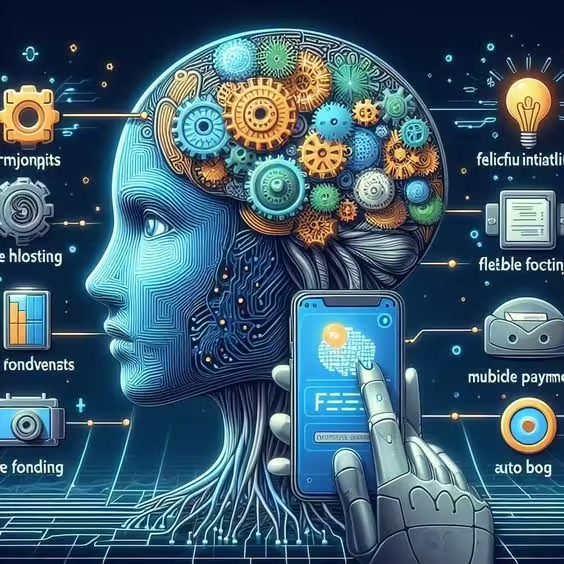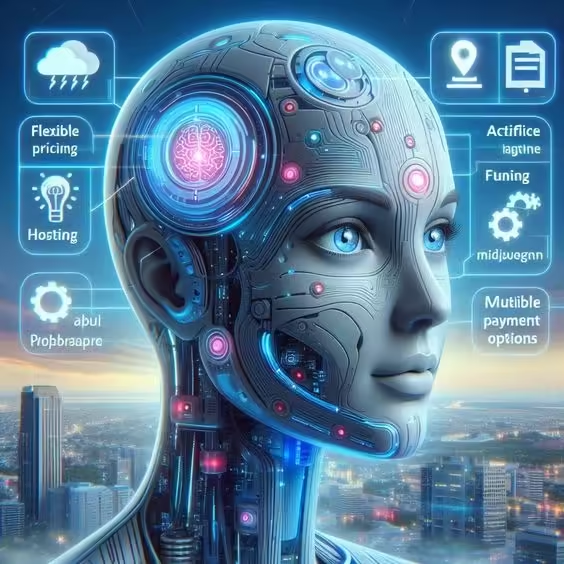In a world where communication is key, the way we interact is rapidly evolving. Enter ChhatGPT, an innovative artificial intelligence that’s reshaping our conversations. This cutting-edge chatbot technology harnesses the power of AI to create meaningful dialogues with users, making chatting more engaging and efficient than ever before.
What if you could have a conversation anytime and anywhere without feeling like you were talking to a machine? ChhatGPT aims to bridge that gap by providing human-like interactions powered by advanced algorithms. It’s not just about answering questions; it’s about understanding context, tone, and intention.
As businesses look for smarter ways to connect with customers and consumers seek seamless interactions, ChhatGPT stands at the forefront of this transformation. Let’s delve into how this groundbreaking technology works and explore its benefits—and limitations—in our increasingly digital lives.
What is ChhatGPT?
ChhatGPT is a revolutionary AI-driven chatbot designed to facilitate natural conversations. Built on advanced algorithms, it mimics human-like dialogue, allowing users to engage in meaningful exchanges.
Unlike traditional chatbots that follow scripted responses, ChhatGPT adapts to context and user inputs. This flexibility enables more dynamic interactions, making conversations feel less mechanical and more intuitive.
It leverages endless sums of information and machine learning methods to get it subtleties in language. Whether answering questions or providing recommendations, it aims for clarity and relevance.
As technology advances, ChhatGPT continues to evolve. Developers are focused on enhancing its ability to interpret emotions and respond appropriately. This paves the way for richer conversational experiences across various platforms—from customer service chats to personal assistants.
With its innovative approach, ChhatGPT represents a significant leap forward in the realm of conversational AI.
The Development and Advancements of AI Chatbots
The journey of AI chatbots has been remarkable. Initially, they were basic programs with restricted capabilities. Early versions could only respond to basic commands or queries, often leaving users frustrated.
As technology evolved, so did the complexity of these chatbots. Natural language processing (NLP) emerged as a game changer. This allowed bots to understand and generate human-like responses.
Recent advancements have introduced machine learning techniques that enable chatbots to learn from interactions over time. They now adapt their responses based on user behavior and preferences.
ChhatGPT takes this concept further by using deep learning models. It creates more engaging conversations that feel less robotic and more intuitive.
Businesses are increasingly adopting these sophisticated chatbots for customer service and support roles. The result is smoother communication channels that enhance user satisfaction significantly.
How ChhatGPT Works
ChhatGPT operates using advanced machine learning techniques. At its core, it relies on a deep neural network architecture known as a transformer. This allows it to understand context and generate human-like responses.
When users input text, ChhatGPT processes the words and identifies patterns based on vast training data. It predicts the next word in a sequence by analyzing relationships between phrases and concepts.
The AI continuously learns from interactions too. Each conversation helps refine its ability to respond accurately over time. This adaptability enhances user experience significantly.
Additionally, ChhatGPT employs reinforcement learning methods. Feedback loops help improve accuracy and relevance, ensuring that answers are not just correct but also meaningful within context.
Through these mechanisms, ChhatGPT achieves fluid conversations that feel natural while maintaining coherence throughout exchanges.
Benefits of ChhatGPT for Businesses and Consumers

ChhatGPT offers a wealth of benefits for both businesses and consumers, revolutionizing interactions in the digital landscape. For companies, it streamlines customer service operations, allowing chatbots to handle inquiries 24/7. This leads to speedier reaction times and more joyful customers.
Consumers enjoy personalized experiences tailored to their needs. ChhatGPT can recommend products or provide instant information based on previous interactions. This level of engagement fosters loyalty and enhances satisfaction.
Additionally, businesses gain valuable insights from conversations with users. The data collected helps refine offerings and improve marketing strategies.
Cost efficiency is another significant advantage; automating routine tasks reduces operational expenses while freeing up human employees for more complex issues. As a result, organizations can allocate resources better and focus on growth opportunities.
In essence, ChhatGPT transforms how we communicate—making it smarter, faster, and more effective for everyone involved.
Potential Concerns and Limitations of AI Chatbots
While AI chatbots like ChhatGPT offer impressive capabilities, they do come with concerns. One major issue is their understanding of context. Sometimes, these bots may misinterpret user intent or lack the nuance needed for complex conversations.
Privacy is another significant concern. Users often share sensitive information in chats without realizing how that data might be stored or used. Transparency approximately information dealing with hones is significant for building trust.
Additionally, dependency on AI can lead to a decline in personal interactions. As businesses increasingly automate customer service, there’s a risk that human touch will fade away from essential communications.
Biases inherent in training data can manifest in chatbot responses. This could inadvertently perpetuate stereotypes or provide misleading information if not carefully monitored and managed by developers and organizations alike.
Real-life Examples of ChhatGPT in Action
Businesses are increasingly harnessing ChhatGPT to enhance customer interactions. For instance, a popular e-commerce platform has integrated this AI into its chat support. Customers receive instant replies about order status, product inquiries, and returns without waiting for human agents.
In education, some universities use ChhatGPT as a virtual tutor. Students can ask questions related to their coursework at any hour and get tailored explanations. This fosters independent learning and provides immediate assistance.
Healthcare professionals also benefit from implementing ChhatGPT in appointment scheduling systems. Patients can easily book or reschedule appointments through an AI-powered chatbot, streamlining the process for both staff and patients alike.
These real-world applications demonstrate how versatile ChhatGPT is across various industries, reshaping traditional communication channels while improving efficiency and accessibility.
The Future of Conversational AI and its Affect on Society
The future of conversational AI promises to reshape how we interact on a daily basis. As technology evolves, so do our expectations for seamless communication.
Imagine chatting with AI that understands nuances and emotions. These advancements could lead to more personalized experiences in customer service, healthcare, and education.
Conversational AI will likely bridge language barriers too, enabling global connections like never before. This opens the door for diverse cultures to share ideas effortlessly.
However, as these technologies advance, ethical considerations become crucial. Privacy concerns may arise if sensitive data is mishandled or misused.
Moreover, the potential replacement of human jobs raises questions about societal impacts. Will we discover a adjust between effectiveness and sympathy in our intelligent?
As we embrace this new era of communication, it’s essential to navigate both its benefits and challenges thoughtfully. The dialogue around conversational AI is just beginning.
Conclusion
ChhatGPT represents a significant leap in conversational technology. As AI continues to evolve, so does its potential to enhance our daily interactions. The capabilities of ChhatGPT are reshaping how businesses and consumers communicate, providing faster responses and more personalized experiences.
The advantages for organizations are clear. Businesses can improve customer service efficiency and deliver tailored marketing messages with ease. For consumers, this translates into quicker resolutions and enriched engagement.
While there are undeniable benefits, we must also consider the challenges that come with such technology. Issues around data privacy and ethical usage require careful attention as we lean more on AI chatbots like ChhatGPT.
Real-world applications illustrate its versatility—from virtual assistants helping users navigate tasks to facilitating complex transactions seamlessly. The journey of ChhatGPT is just beginning, paving the way for further innovations in conversational AI that could redefine societal interaction patterns.
As we look ahead, it’s essential to stay informed about these developments while embracing the creativity they foster. The impact of technologies like ChhatGPT will undoubtedly continue shaping communication trends for years to come.


